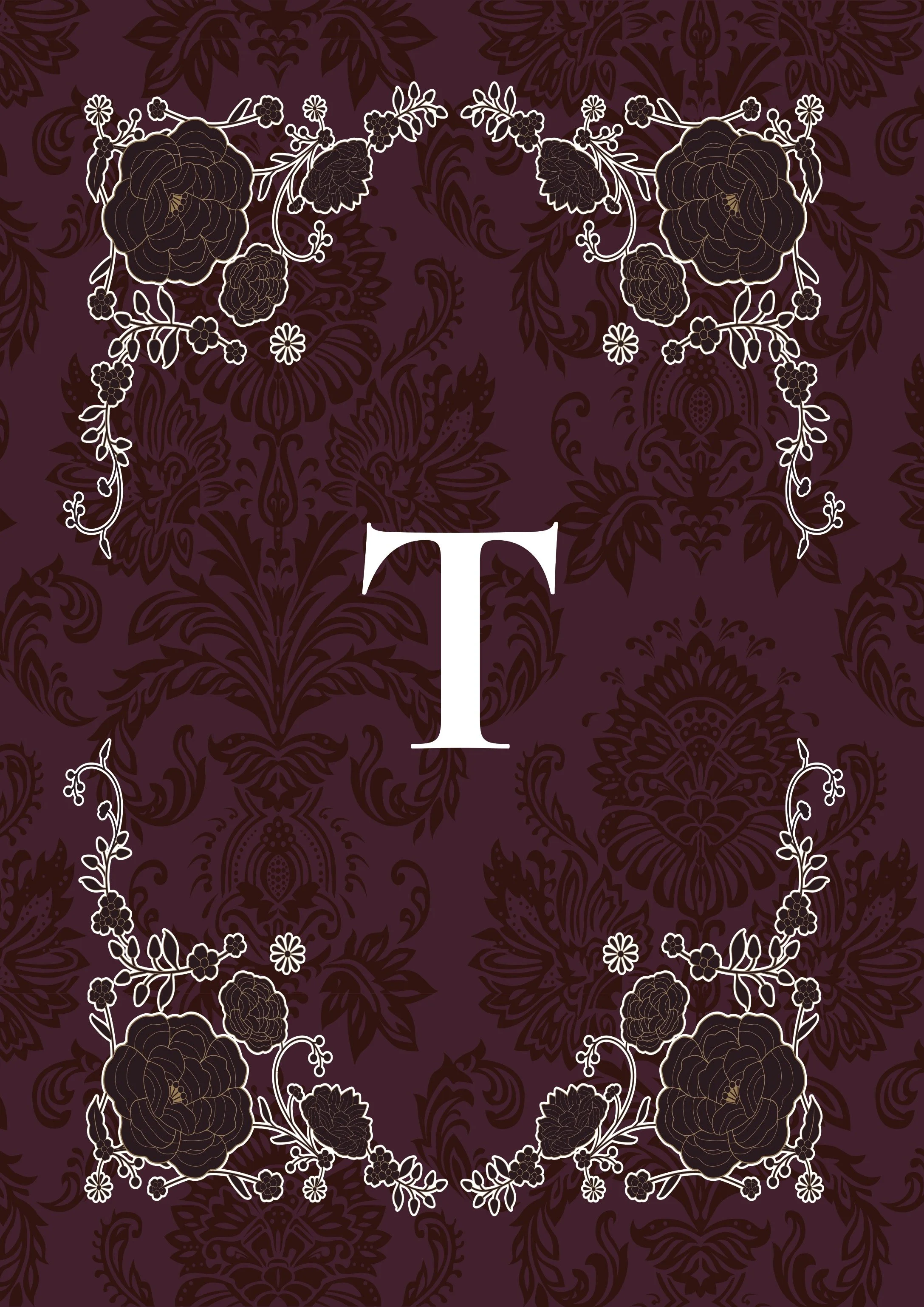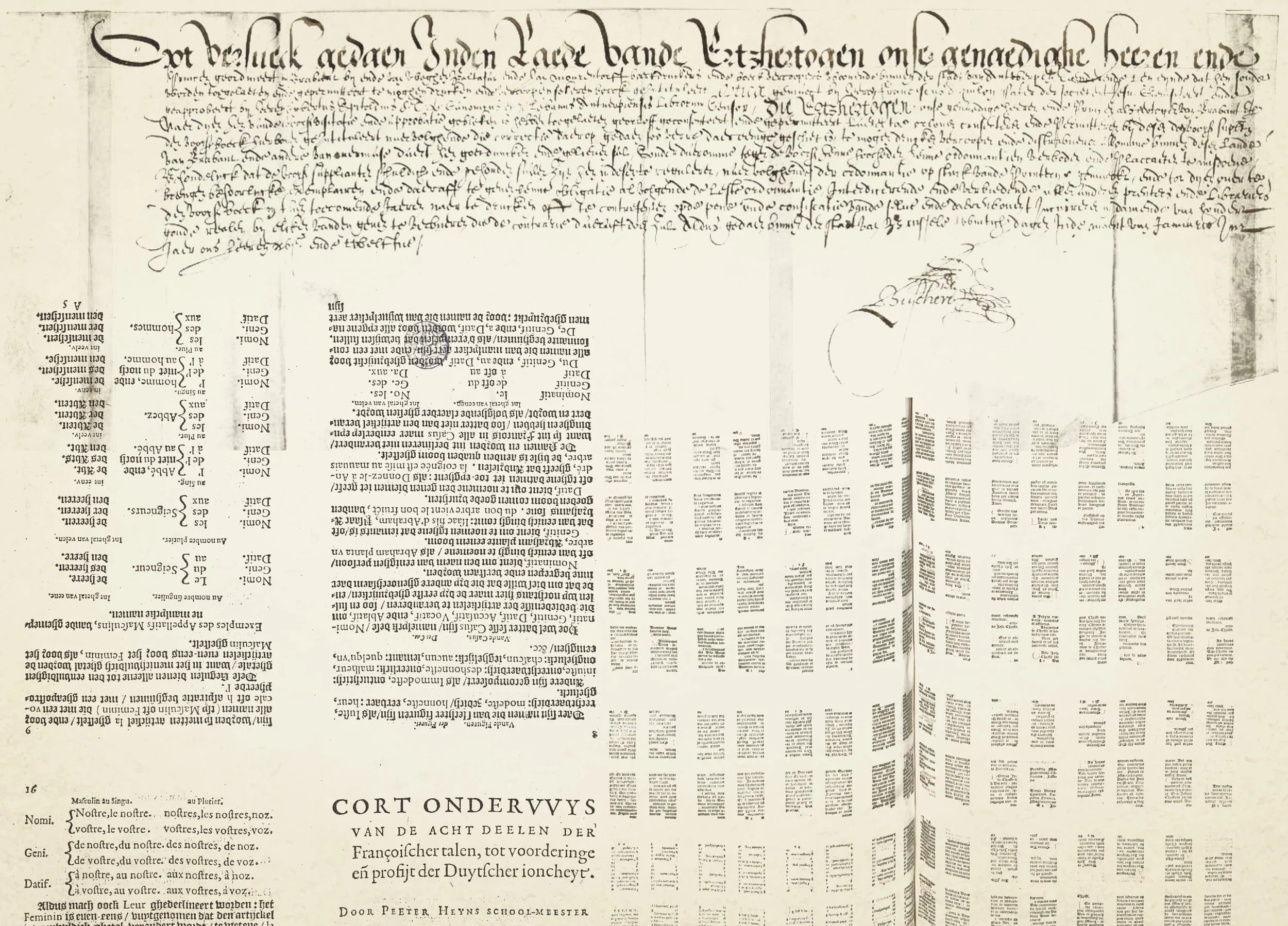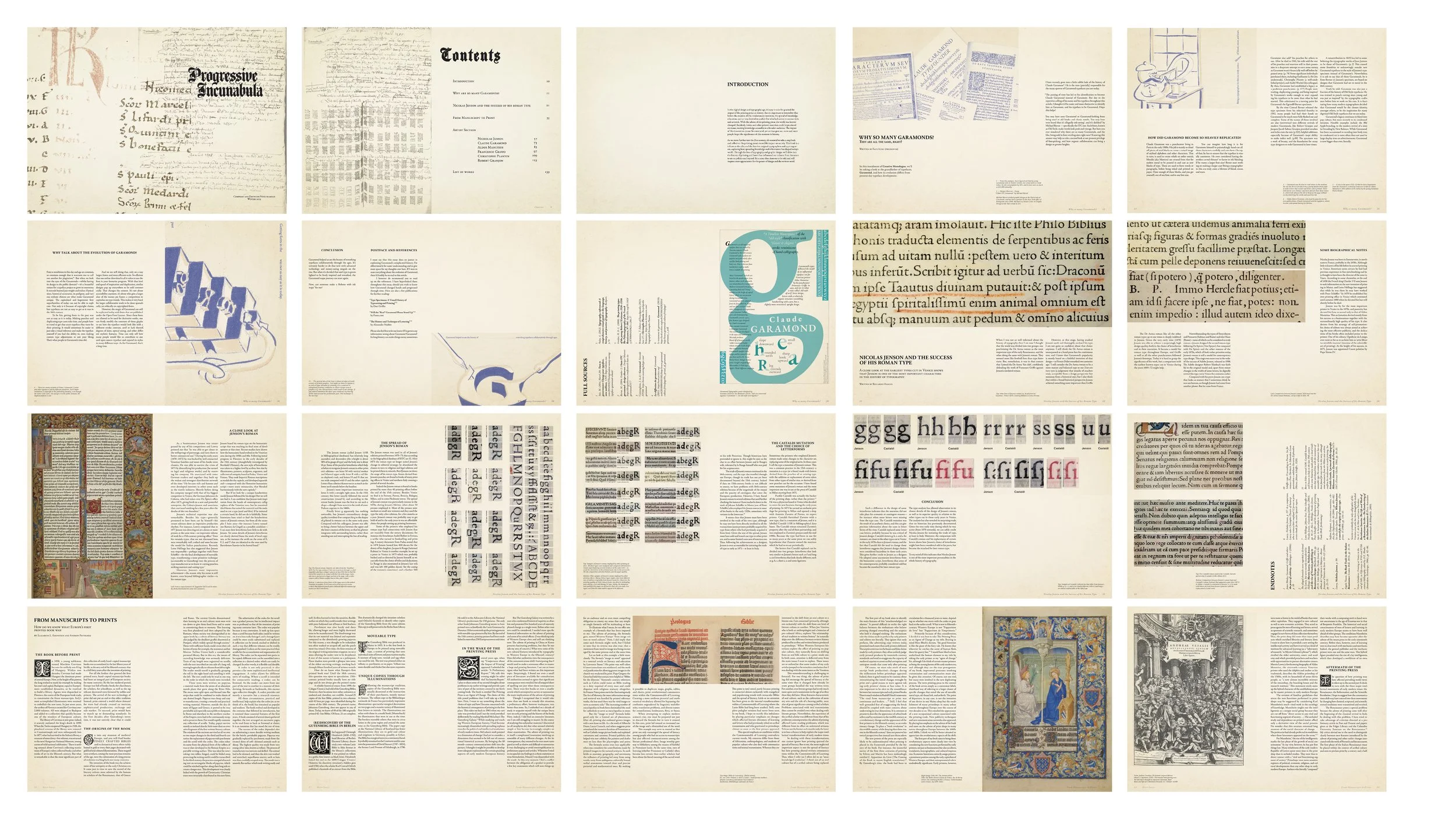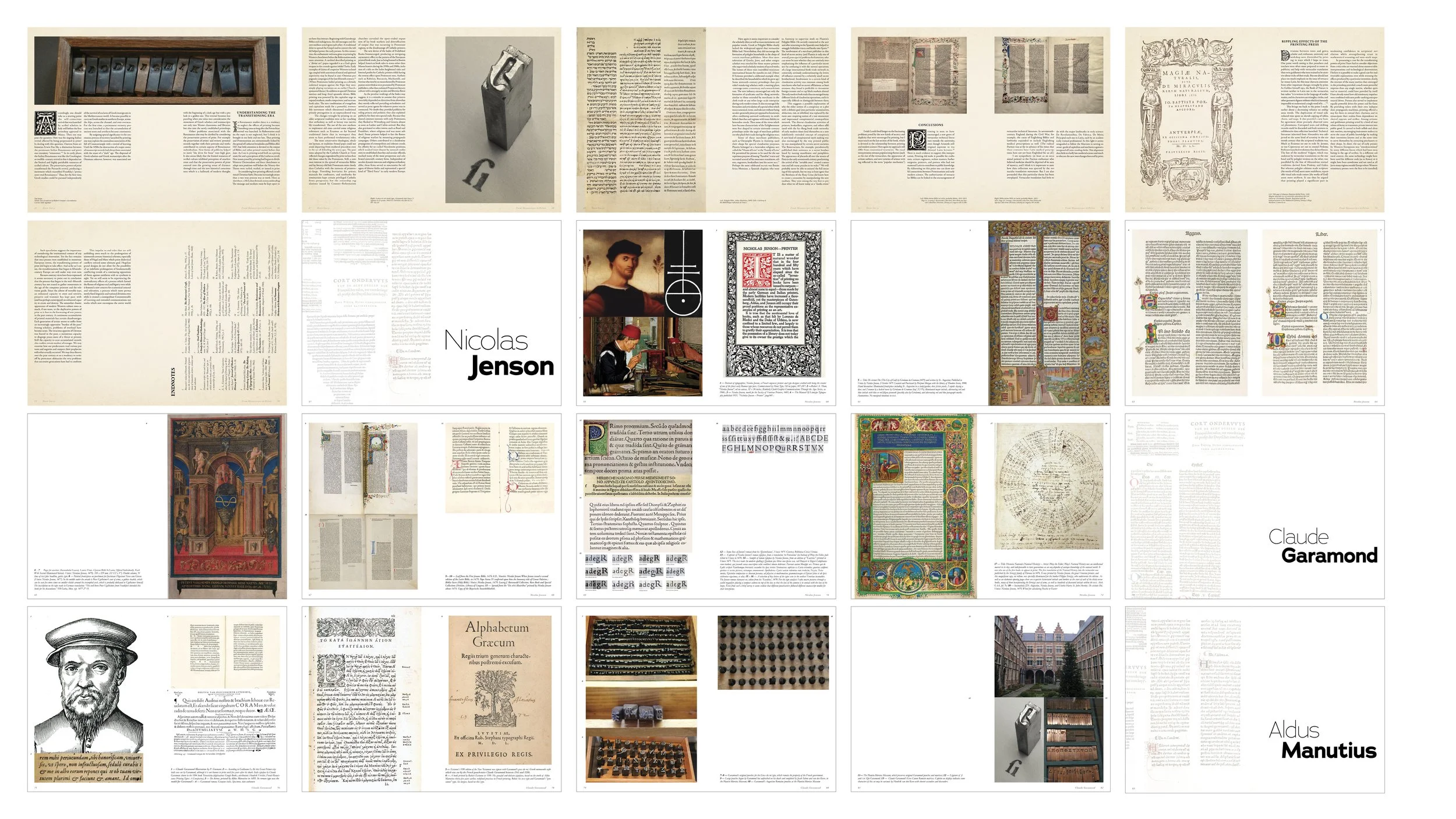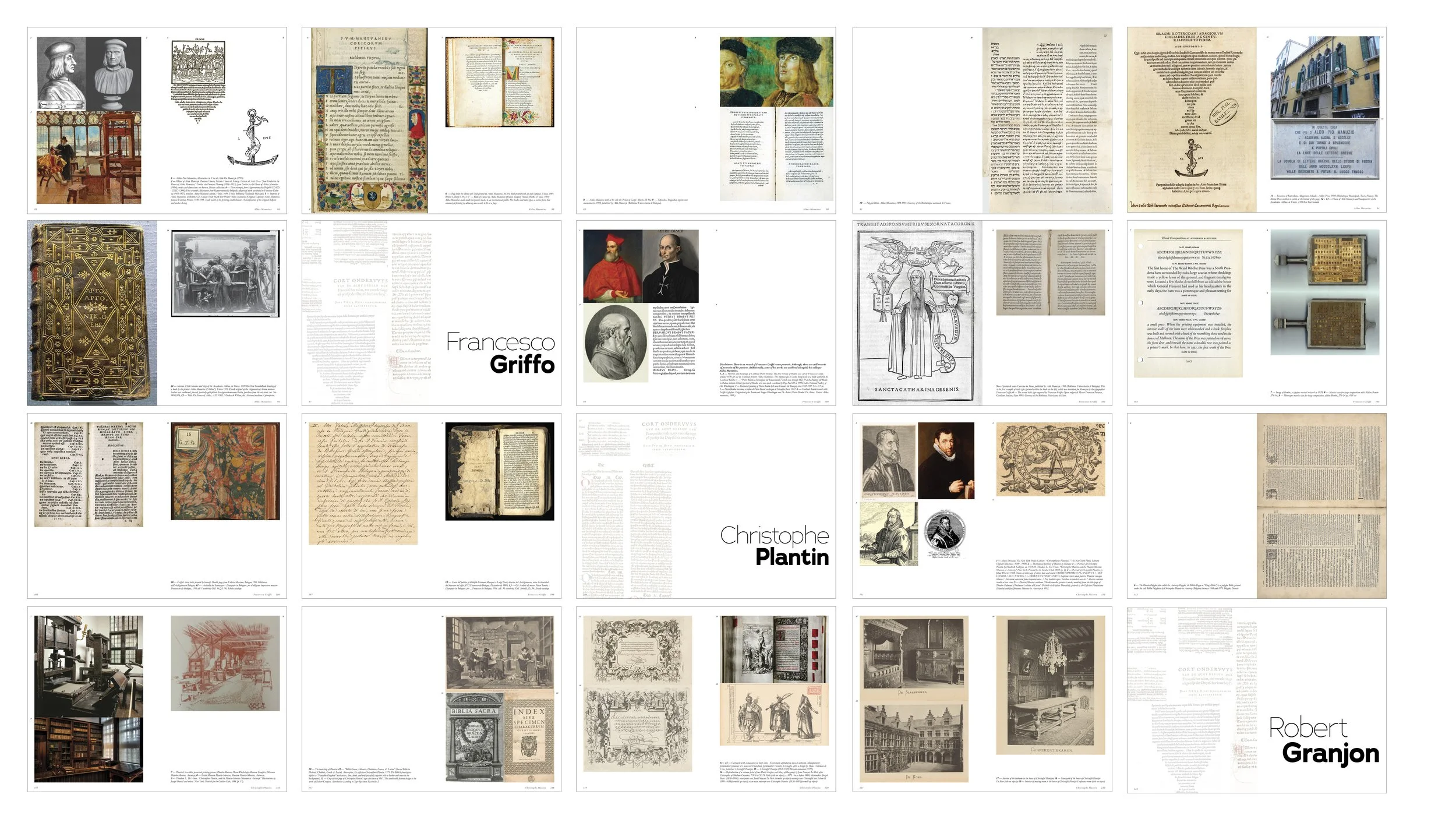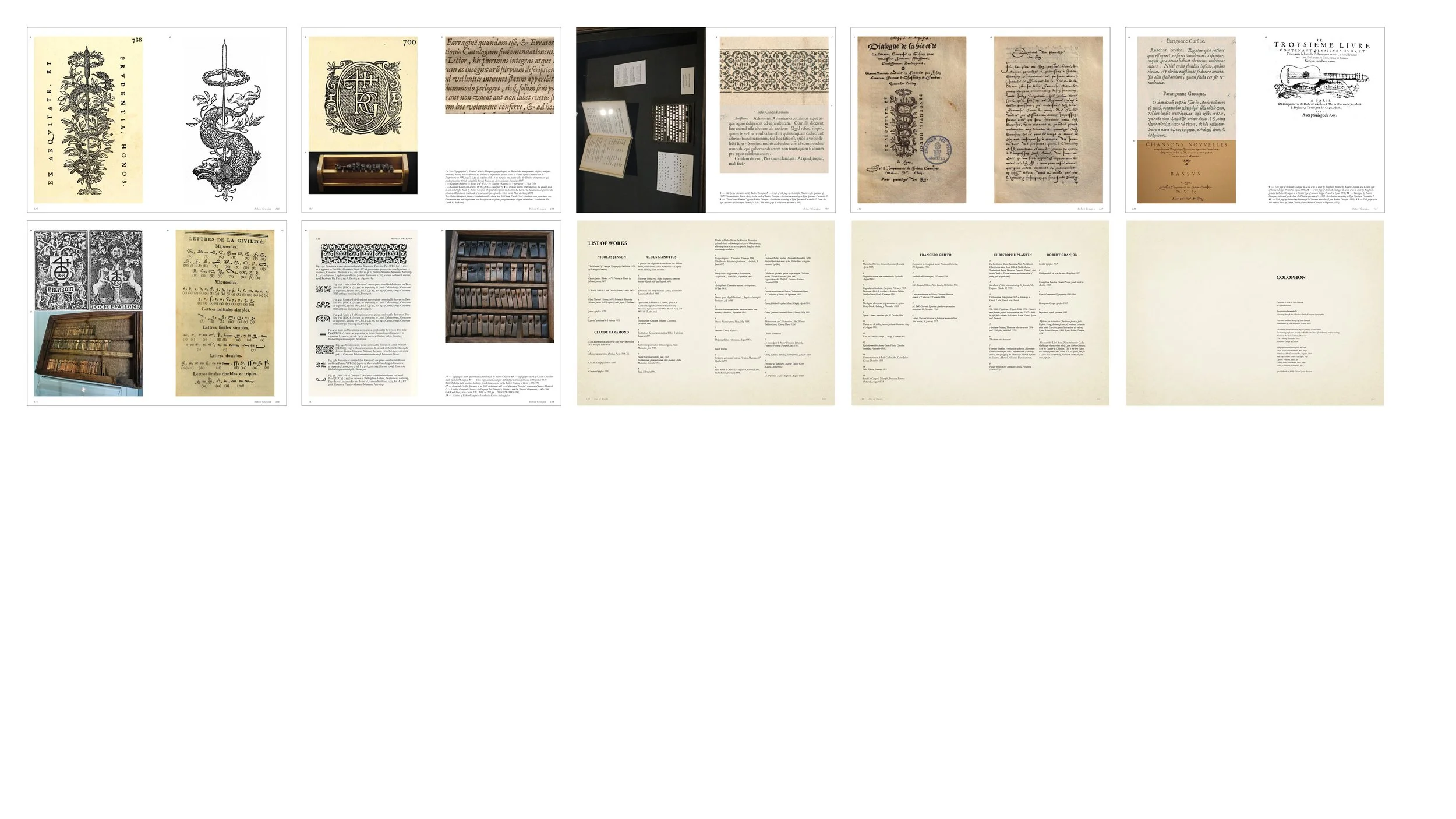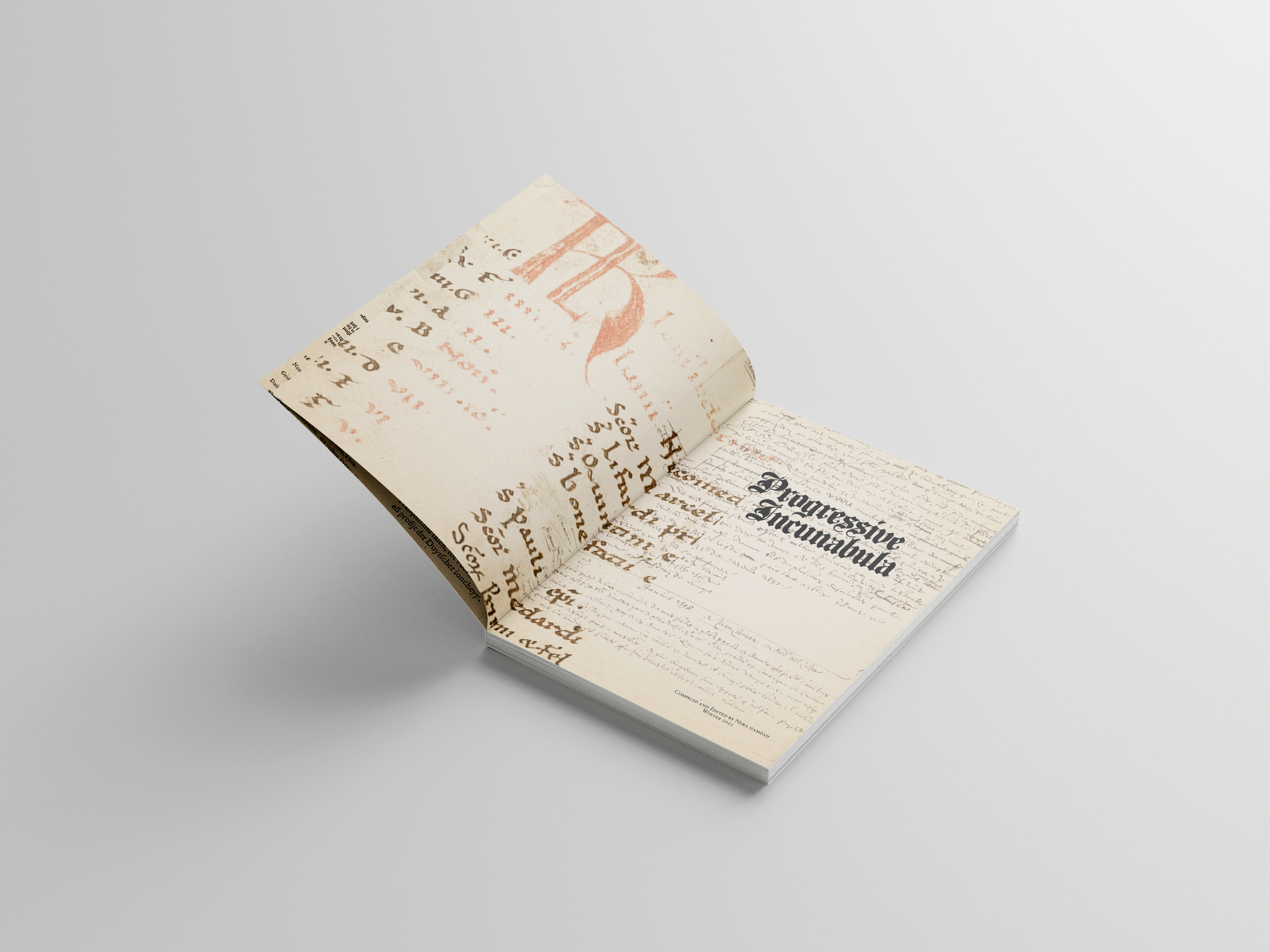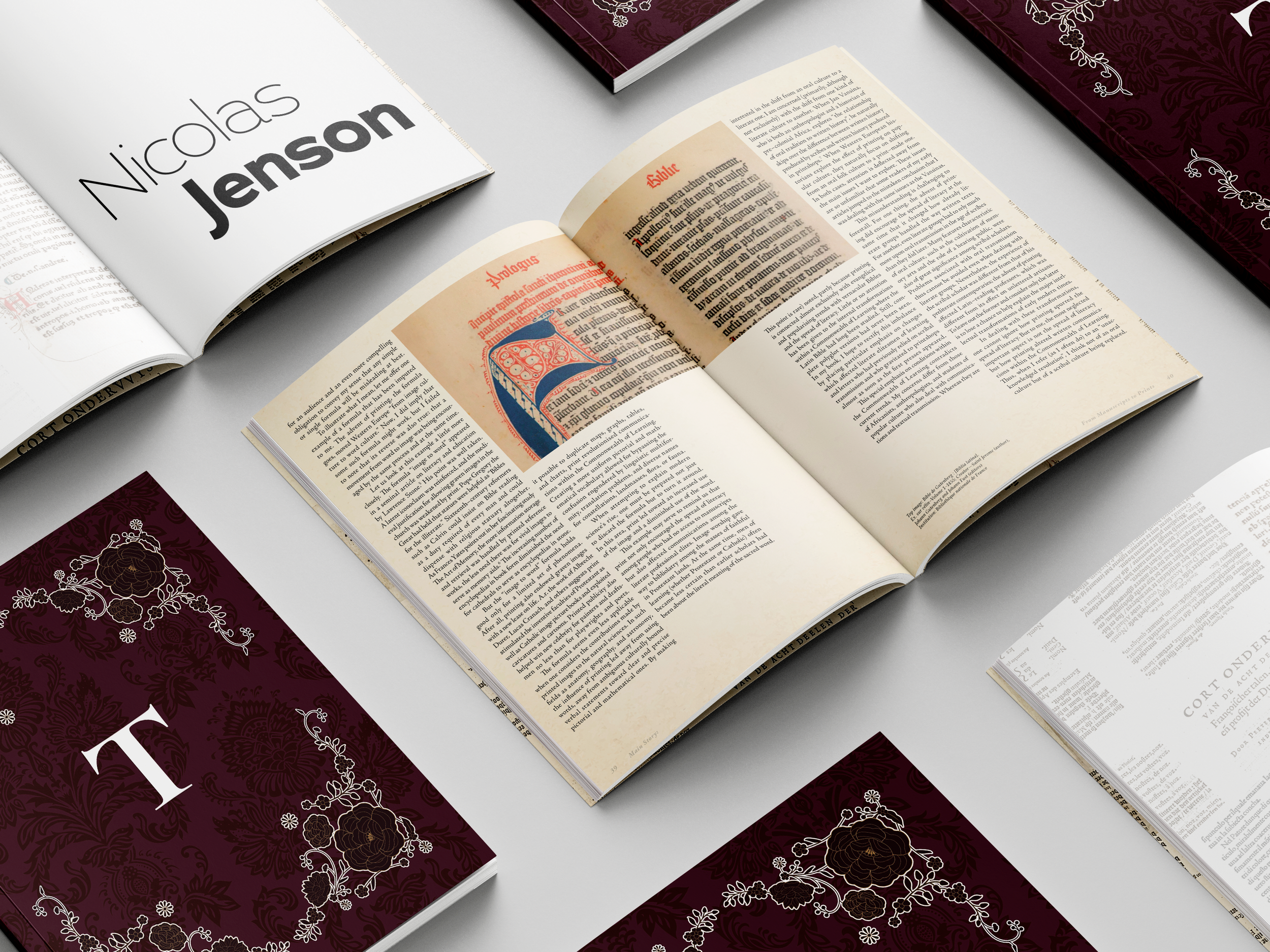
PROGRESSIVE INCUNABULA
CONCEPT
Creating a short publication for a museum exhibition that focuses on their collections of artifacts and the history of the oldest European typography and their creators. The exhibition will explore their relations with movable type, their publications, and how their typographies have evolved. In today's world, the fonts we use are often taken for granted without giving any appreciation to their origin. Through this exhibition, I hope to shed light on the lost and forgotten parts of history that have helped society evolve in literacy.
EXHIBITION POSTERS
AND ENVIRONMENT
LAYOUT
Promo Poster
I designed a poster that gives the impression of a collaboration between old typographers and typesetters in a modern era. I incorporated features commonly found in old European printing presses, such as a decorative border resembling those in old European books and Bibles, as well as the fish "printer's mark" created by Robert Granjon. I paired Garamond with Jenson for the title and body copy to represent the names of the typographers, and used the Adrianna font for the modern-era information to create a harmonious contrast.
Exhibition Wayfinder
After being inspired by the exhibition wall at the Getty, I decided to create a Wayfinder for my Progressive Incunabula exhibition. I wanted it to be an extension of their Middle Ages Graphic Design exhibition, but with a more playful, organic, and colorful approach. My aim was to convey the vibrancy of early European books. To achieve this, I used a woodcut typeface, colorful inks, and a textured background made from collaging real notes and drafts of old typographers' journals. These combinations provide a representation of the old and new styles of graphic design in modern publications.
WHY INCUNABULA?
I decided to start this project out of my love for reading and research. As a child, I fell in love with the "Little Golden Book" series, which inspired me. However, as I grew older, I noticed that many books lacked the charm that made reading enjoyable. During my research, I discovered the beauty of early printed books, known as Incunabula. I titled this project "Progressive Incunabula" to showcase how these books have evolved over the centuries. I want to create a modern revival of an incunabulum exhibition publication, paying tribute to the forgotten creators.
BOOK LAYOUT
Front Cover
Inner Covers' Spread
Opening Credits and Essays
Essays Cont. and Artist Sections
Artist Sections Cont.
Artist Sections Cont., Glossary, Colophons
Back Cover

